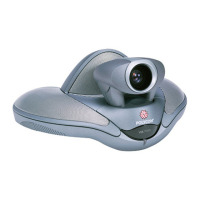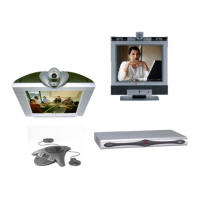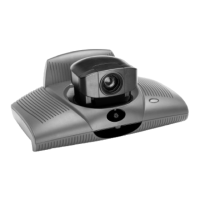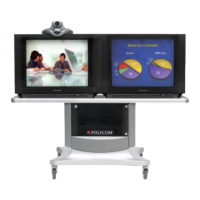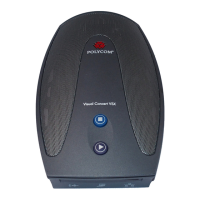TROUBLESHOOTING
© Polycom, Inc. 45 VORTEX EF2280 Reference Manual
equipment is set up so that participants are too far from the microphone.
In such a situation, after correct microphone setup the local microphone
audio level may be too low because of the distance from the talker to the
microphone. The microphone audio will most likely also be muddy and
reverberant. The installer or user may try to solve these microphone
audio quality problems by turning up the microphone amplification, thus
adding to the room gain. This problem can be remedied by proper micro-
phone selection (pickup pattern, directionality) and placement, coupled
with proper microphone input calibration.
3. A third common cause of room gain problems is excessive coupling
between loudspeaker audio and microphones. This can be addressed by
reducing the microphone coupling, either by positioning microphones so
that their pickup patterns are biased away from the loudspeaker audio
(and direct reflections of loudspeaker audio), repositioning loudspeakers,
or reducing the loudspeaker amplification.
In summary, any amplification applied between the reference input and the
microphone inputs can add to room gain problems. To avoid problems, ensure
that the Reference input signal is not too low, and the microphone input sig-
nals are not too high. Run the built-in EF2280 Room Gain test to verify that
you do not have room gain problems (See “Verify Room Gain” on page 16).
In-Conference
Quick Check
If you experience residual echo problems during a conference, you can
quickly check that the reference and microphone levels are calibrated and not
causing room gain problems by using the Room Gain parameter (See “Verify
Room Gain” on page 16).
If this excessive coupling activity level is evident on only one microphone
input channel, that microphone channel should either be redirected to reduce
coupling to loudspeaker audio, or recalibrated as it will need to be turned
down. If the excessive coupling activity is observed on all (or most) micro-
phone channels, then this indicates either that the room audio is too loud or
the reference signal may need to be recalibrated (this will be indicated by
observing low activity levels on the S
IGNAL LEVEL METER for the reference sig-
nal).
C
OMMON CAUSES OF EXCESSIVE ROOM
G
AIN
REMEDY
Excessive loudspeaker amplification Apply enough gain to the codec,
phone or program audio inputs
which will make up the Reference
input signal.
Excessive microphone amplification Select proper microphones for
talker distance according to pickup
pattern and directionality and prop-
erly calibrate mic inputs.
Excessive coupling between loud-
speaker audio and microphones
Reduce mic coupling by reposition-
ing mics or loudspeakers, or by
reducing loudspeaker amplification.
Table 3: Summary of Excessive Room Gain.
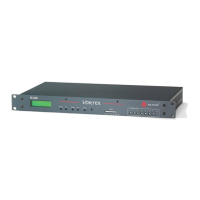
